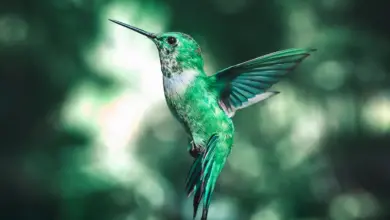Bananaquits (Coereba flaveola)
The Bananaquits (Coereba flaveola) is a small, energetic nectarivore that occurs naturally in the warmer parts of the Americas, where it is generally common.
Description
The Bananaquit is a small bird attaining an average length of 11 centimetres (4.3 in).
Most subspecies of the Bananaquit have dark grey (almost black) upperparts, black crown and sides of the head, a prominent white eyestripe, grey throat, white vent, and yellow chest, belly and rump.
The sexes are alike, but juveniles are duller and often have a partially yellow eyebrow. In the subspecies bahamensis and caboti from the Bahamas and Quintana Roo the throat and upper chest are white or very pale grey, while ferryi from La Tortuga Island has a white forehead.
The subspecies laurae, lowii and melanornis from small islands off northern Venezuela are overall blackish, while the subspecies aterrima and atrata from Grenada and Saint Vincent have two plumage morphs, one “normal” and another blackish.
The pink gape is usually very prominent in the subspecies from islands in the Caribbean Sea.
Behavior
It has a slender, curved bill, adapted to taking nectar from flowers.
It sometimes pierces flowers from the side, taking the nectar without pollinating the plant. It cannot hover like a hummingbird, and must always perch while feeding. It will also eat fruit and insects.
It often visits gardens and may become very tame. Its nickname, the sugar bird, comes from its affinity for bowls or bird feeders stocked with granular sugar, a common method of attracting these birds.
The Bananaquit builds a spherical lined nest with a side entrance hole, laying up to three eggs, which are incubated solely by the female.
Distribution
It is resident in tropical South America north to southern Mexico and the Caribbean. It is found throughout the West Indies, except Cuba. Birds from the Bahamas are rare visitors to Florida.
It occurs in a wide range of open to semi-open habitats, including gardens and parks, but it is rare or absent in deserts, dense forests (e.g. large parts of the Amazon Rainforest) and at altitudes above 2,000 metres (6,600 ft).
Taxonomy
The Bananaquit was first described by Linnaeus in his Systema Naturae in 1758 as Certhia flaveola. It was reclassified as the only member of the genus Coereba by Louis Jean Pierre Vieillot in 1809.
Prior to 2005 the Bananaquit was assigned to the monotypic family Coerebidae; there is currently no agreement to which family it belongs; some authors place it into the Emberizidae.
Since recent studies have shed some light on the Bananaquit’s affinities, many authorities consider Coerebidae an obsolete taxon.
The Coerebidae used to contain other nectar-eating birds from the tropical Americas, but these have since been moved.
The Bananaquit is part of a group that includes the Darwin’s finches, Tiaris (grassquits), Loxigilla, etc.—most of which were previously placed in Emberizidae, but are now known to actually be part of the Thraupidae. As such this species is tentatively placed in the Thraupidae family unless a study suggests more accurate placement. Nevertheless, its precise relations remain unresolved, so the American Ornithologists’ Union thus classes it as species incertae sedis.
It is still unclear if any of the island subspecies actually should be elevated to species, but phylogenetic studies have revealed three clades: The nominate group from Jamaica, Hispaniola and the Cayman Islands, the bahamensis group from the Bahamas and Quintana Roo, and the bartholemica group from South and Central America, Mexico (except Quintana Roo), the Lesser Antilles and Puerto Rico.
Several taxa were not sampled, but most of these are easily placed in the above groups based on zoogeography alone. Exceptions are oblita (San Andrés Island) and tricolor (Providencia Island), and their placement is therefore uncertain.
In February 2010, the International Ornithological Congress listed two taxa, bahamensis and bartholemica as proposed splits from Coereba flaveola, but if these equal the three earlier mentioned clades is presently unclear.
Subspecies
- Coereba flaveola alleni Lowe, 1912
- Coereba flaveola aterrima (Lesson, 1830)
- Coereba flaveola atrata (Lawrence, 1878)
- Coereba flaveola bahamensis (Reichenbach, 1853)
- Coereba flaveola bananivora (Gmelin, 1789)
- Coereba flaveola barbadensis (Baird, 1873)
- Coereba flaveola bartholemica (Sparrman, 1788)
- Coereba flaveola bolivari Zimmer and Phelps, 1946
- Coereba flaveola bonairensis Voous, 1955
- Coereba flaveola caboti (Baird, 1873)
- Coereba flaveola caucae Chapman, 1914
- Coereba flaveola cerinoclunis Bangs, 1901
- Coereba flaveola chloropyga (Cabanis, 1850)
- Coereba flaveola columbiana (Cabanis, 1866)
- Coereba flaveola dispar Zimmer, 1942
- Coereba flaveola ferryi Cory, 1909
- Coereba flaveola flaveola (Linnaeus, 1758)
- Coereba flaveola frailensis Phelps and Phelps Jr, 1946
- Coereba flaveola gorgonae Thayer and Bangs, 1905
- Coereba flaveola guianensis (Cabanis, 1850)
- Coereba flaveola intermedia (Salvadori and Festa, 1899)
- Coereba flaveola laurae Lowe, 1908
- Coereba flaveola lowii Cory, 1909
- Coereba flaveola luteola (Cabanis, 1850)
- Coereba flaveola magnirostris (Taczanowski, 1880)
- Coereba flaveola melanornis Phelps and Phelps 1954
- Coereba flaveola mexicana (Sclater, 1857)
- Coereba flaveola minima (Bonaparte, 1854)
- Coereba flaveola montana Lowe, 1912
- Coereba flaveola nectarea Wetmore, 1929
- Coereba flaveola newtoni (Baird, 1873)
- Coereba flaveola oblita Griscom, 1923
- Coereba flaveola obscura Cory, 1913
- Coereba flaveola pacifica Lowe, 1912
- Puerto Rican honeycreeper (Reinita) – Coereba flaveola portoricensis (Bryant, 1866)
- Coereba flaveola roraimae Chapman, 1929
- Coereba flaveola sharpei (Cory, 1886)
- Coereba flaveola tricolor (Ridgway, 1884)
- Coereba flaveola uropygialis Berlepsch, 1892
Beauty Of Birds strives to maintain accurate and up-to-date information; however, mistakes do happen. If you would like to correct or update any of the information, please contact us. THANK YOU!!!



